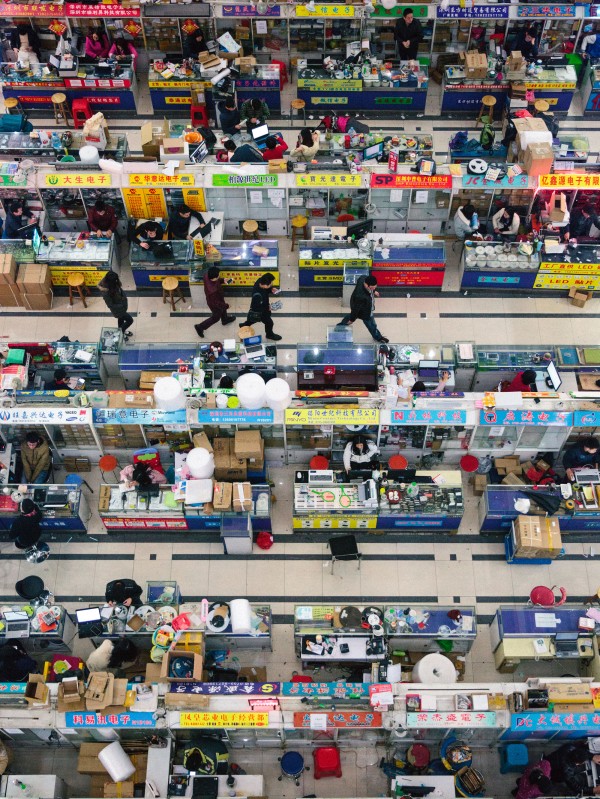
Every day at around 4 p.m., the creeeek criikkk of stretched packing tape echoes through Huaqiangbei, Shenzhen’s sprawling neighborhood of hardware stores. Shopkeepers package up the day’s sales—selfie sticks, fidget spinners, electric scooters, drones—and by 5, crowds of people are on the move at the rapid pace locals call Shenzhen sudu, or “Shenzhen speed,” carting boxes out on motorcycles, trucks, and—if it’s a light order—zippy balance boards. From Huaqiangbei the boxes are brought to the depots of global logistics companies and loaded onto airplanes and cargo ships. In the latter case they join 24 million metric tons of container cargo going out every month from Shekou harbor—literally “snake’s mouth,” the world’s third-busiest shipping port after Shanghai and Singapore.
A few days or weeks later, the boxes arrive in destinations as nearby as Manila and Phnom Penh and as far afield as Dubai, Buenos Aires, Lagos, and Berlin. They appear in the world’s largest cities and smallest villages: selfie sticks held up in front of Indian temples, a (rebranded) Xiaomi electric scooter cruising down San Francisco’s Market Street, and a DJI drone flying over pretty much anywhere. If your gadget says “Made in China,” the chances are it came from Shenzhen.
